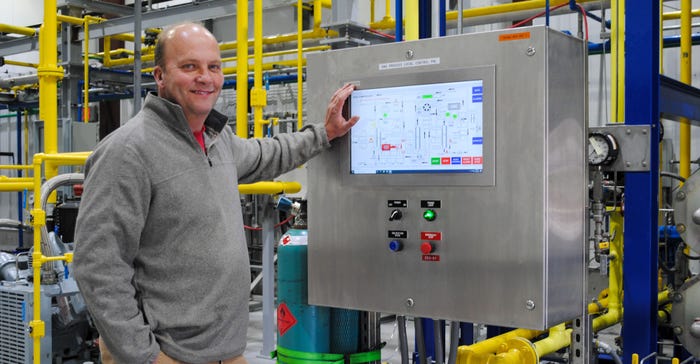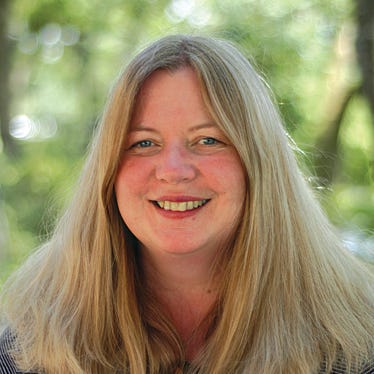
When Holsum Irish Dairy near Chilton and Holsum Elm Dairy near Hilbert were built in 2000 and 2006, respectively, each had a manure digester. The digesters at these large Calumet County, Wis., dairies, located 5 miles apart, transformed cow manure into methane gas.
“Historically, we took the methane produced by the digesters to make electricity,” explains Dr. Bob Nagel, veterinarian, partner and general manager of both dairies. “Utility companies were eager to purchase the electricity because it came from renewable sources, fulfilling the government’s requirement that utilities purchase 15% of their electricity or fuel from renewable sources.”
The amount the utility companies paid farmers for this electricity, which was sold back to the grid, allowed the farmers to make a profit and maintain the digesters. But after windmills and solar farms began springing up across the state, the utility companies began fulfilling the 15% renewable fuel requirement through solar and wind energy instead of from manure digesters, Nagel says.
“When our electricity purchase agreements came up for renewal in the past couple years, the amount utility companies were willing to pay was considerably less than it used to be — and wasn’t enough to maintain the digesters,” he says.
Unique solution
That’s when Nagel and the owners of other large Wisconsin dairy farms with manure digesters began learning about rising market demand for renewable natural gas, for use as an alternative fuel. Steve Dvorak, owner of DVO, the company Holsum Dairies purchased its manure digesters through, introduced Nagel and several other dairy farmers to Hardy Sawall, director of business development at U.S. Gain, which is a division of U.S. Venture, located in Appleton, Wis. U.S. Gain, a developer and distributor of alternative fuel and renewable energy, is working with several large dairies to expand development of renewable natural gas that can be consumed by the transportation market.
A partnership with U.S. Gain offers farmers the ability to repurpose existing digester assets, strengthen farm sustainability through methane capture and manure management practices, and obtain cost-savings by using nutrient-rich fertilizer and organic bedding that are byproducts of the digestion process. Additionally, in some cases, farms can share in a portion of financial credit values offered by the federal government and the state of California.
Feasibility study
Holsum Dairies milks 8,400 cows on its two dairy farms. Two years ago, Holsum did a feasibility study to determine if it should make the switch to selling renewable natural gas from its digesters.
“The economics of this are extremely favorable,” Nagel says. “There are a dozen facilities in Wisconsin that are adapting this technology and several more in the works. In November 2019, we started building a plant, which cleans the methane from our digesters and injects this gas, along with the clean methane that is hauled to our farm from four other farms. We finished construction on the plant in June.”
Related: Around Farm Progress podcast looks at renewable natural gas
A pipeline from both Holsum dairies transports methane gas to the plant at Holsum Elm. U.S. Gain delivers semitruck loads of methane gas from manure digesters at Deer Run Dairy in Kewaunee, Clover Hill Dairy in Campbellsport, S&S Dairy in Sturgeon Bay and East River Dairy in Hilbert to Holsum Elm.
At Holsum Elm, carbon dioxide, a small amount of nitrogen and other impurities are removed from the methane gas. Once the natural gas is “clean,” it is injected into a pipeline that runs from Green Bay to Chicago through Holsum Elm.
Driving demand for renewable natural gas
“The Low Carbon Fuel Standard is a market-based program that focuses specifically on reducing carbon intensity of fuels used within California,” Sawall explains. “It was created in 2011 by the California Air Resources Board as part of several measures to reduce greenhouse gas emissions throughout the state. As part of the standard, credit generation opportunities exist to incentivize the production and use of low-carbon fuels, like renewable natural gas.”
Dairy-based renewable natural gas can generate some of the highest credit values under the LCFS program because of incredibly low carbon intensity scores, which is why demand for this type of fuel has emerged over the past several years. The low scores for dairy gas factor in methane emission reductions that occur during development.
Renewable natural gas can also be produced at landfills and wastewater treatment plants, which comprise most of California’s volume today, but these feedstocks don’t generate as many credits per volume as manure-based gas.
Regardless of the type of renewable natural gas, to generate any LCFS credits, the gas must be dispensed into transportation and verified by the California Air Resources Board. U.S. Gain owns several natural gas fueling stations within California, and has additional dispensing agreements with privately held stations in the region, that link the fuel to transportation, enabling the credit generation process to happen.
In the case of Holsum Dairies, U.S. Gain receives a monthly statement from Nagel showing the volumes of renewable natural gas produced at his locations. U.S. Gain matches that supply with natural gas dispensed within its network, and then submits appropriate paperwork to the California board for credit generation.
Why do dairy farmers partner with U.S. Gain? “We’re knowledgeable in renewable natural gas development, have established partnerships to monetize the gas downstream, offer flexible business agreements, and look at each opportunity as a long-term relationship that delivers environmental and economic value to our farming partners and U.S. Gain,” Sawall says. “We’re passionate about the benefits renewable natural gas brings to farms across Wisconsin and look forward to engaging with more dairies to come.”
Cow manure powers Wisconsin homes
Capturing renewable natural gas from large Wisconsin dairy farms is good for consumers, large dairy farms and the environment. Two-thousand dairy cows produce enough natural gas per year to meet the electrical and natural gas needs of 443 Wisconsin homes, according to the U.S. Energy Information Administration.
Holsum Elm Dairy and Holsum Irish Dairy milk 8,400 cows combined. Together, manure from Holsum cows provides enough renewable natural gas to power, heat and cool 1,860 Wisconsin homes each year.
• Wisconsin households use 103 million Btu of energy per home, 15% more than the U.S. average.
• Lower electricity and natural gas rates compared to states with a similar climate, such as New York, result in Wisconsin households spending 5% less for energy than the U.S. average.
• Less reliance on electricity for heating, as well as cool summers, keeps average site electricity use in Wisconsin low relative to other parts of the U.S.
About the Author(s)
You May Also Like






